
If guitars were works of art, the Fender Stratocaster would surely enjoy the same celebrity status as the Mona Lisa or Starry Night. Revered for its iconic design, versatility, and sound that has influenced decades of music, it’s easy to understand why the Fender Stratocaster has been the chosen instrument for many legendary guitarists worldwide. Whether you’re an avid fan of rock, blues, or jazz, or a budding artist looking to cement your sound, this guide provides comprehensive information about the Fender Stratocaster. From its rich history and different models to its key features, budgeting, and where to purchase this legendary instrument, every angle is covered to help you make an informed buying decision.
Understanding Fender Stratocaster: An Overview
The Inception and Evolution of the Fender Stratocaster
In the early 1950s, Leo Fender, a radio repairman turned guitar manufacturer, revolutionized the guitar industry with the inception of Fender Stratocaster, often simply known as the Strat. A symbol of rock and roll for its unique sound, the Strat stands among the all-time classics of electric guitars.
Developed out of a need for a guitar with a milder tone and easier to play, Leo Fender sought to create an instrument that met these needs plus had an upgraded tremolo system and contour body design for comfort. After years of effort, the Fender Stratocaster was born in 1954.
Over the years, Fender Stratocaster evolved to match the changing musical scenes. Although the core design remained the same, noticeable changes in its wiring configurations, neck shapes, body finishes, and artist collaborations came about. Today, there are multiple versions of the Strat available, from American to Mexican made, and even Custom Shop models.
Why Fender Stratocaster is Considered a Classic
The Fender Stratocaster has cemented its place in the history of music, used by many iconic musicians such as Jimi Hendrix, Eric Clapton, and David Gilmour. What makes it a classic is its signature chime-like clean tones, warm and full-bodied bluesy tones, and aggressive rock drive. It is the versatility of the Stratocaster, being capable of producing a wide array of sounds, that still defines its unmatched popularity.
Getting to Know the Fender Stratocaster for Buyers
In deciding to purchase a Fender Stratocaster, it’s important to understand the array of models offered and their distinct features tailored to various player tastes.
For example, the revered Fender American Professional Stratocaster marries modern specifications with a classic Strat design, making it an ideal option for those seeking an upgraded instrument that still embodies the quintessential Strat look.
Rekindling different periods in Fender’s history, they have the American Vintage series. These guitars impeccably mirror the Stratocasters of each era. These produce nostalgia in those desiring to conjure up a particular period of the Fender Stratocaster’s audio and aesthetic elements.
On a budget? The Fender Mexican Standard Stratocaster gives guitarists the much-loved traditional Strat experience, offering an iconic Stratocaster essence at a lower cost.
For those seeking a more personalized guitar, there’s the Fender Custom Shop Strats. With its vast customization options including neck shape, fret size, and pickups, these guitars can be extensively tailored, providing a unique creation echoing your individual style and preferences.
When choosing a Stratocaster, it’s vital to consider playability, tone, construction quality, your budget, and how the specific features cater to your playing style. Remember, with a Stratocaster, you’re acquiring more than a mere guitar but an emblem of musical heritage stretching across various genres and generations.
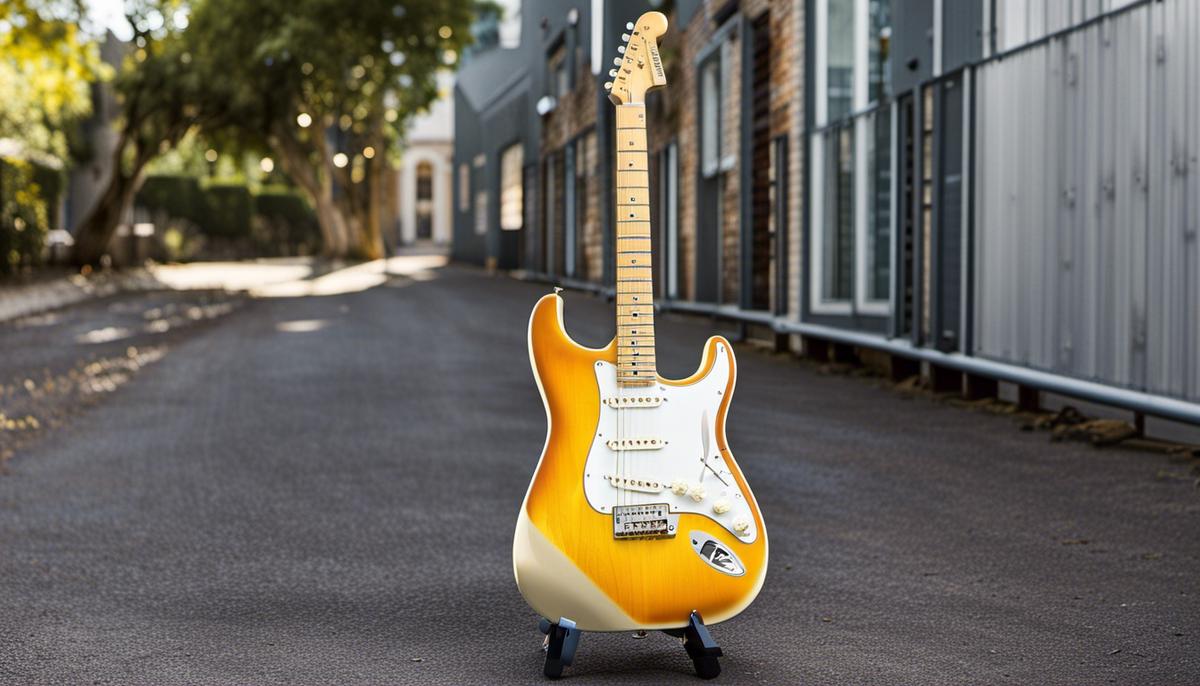
Models and Variations of Fender Stratocaster
The Fender Stratocaster: A Brief Overview
Undeniably, the Fender Stratocaster holds its place as one of the most veritable icons in electric guitar history. Since it first appeared on the scene in 1954, the Stratocaster has become a go-to for countless guitarists. Its distinct tone and timeless design have solidified its status as a benchmark for musicians from all walks of life and musical styles.
American-Made Stratocasters: Craftsmanship and Excellence
American Fender Stratocasters are typically seen as the top standard. They are made in America with quality materials and notable craftsmanship. High-end models, like the Fender American Professional Stratocaster and the Fender American Ultra Stratocaster, provide excellent playability, superior tonal diversity, and a high level of overall quality. American-made Strats are certainly more expensive, but they can be worth the investment for serious musicians.
Mexican-Made Stratocasters: A Great Mix of Quality and Affordability
Next in line are the Mexican Stratocasters, also known as the Player series. Built in Fender’s Ensenada factory in Mexico, the Player series combine quality craftsmanship with a lower price tag. These models are well-regarded in the guitar world and are a go-to pick for many players.
Japanese-Made Stratocasters: The Fusion of Tradition and Innovation
Japanese-Made Stratocasters are a blend of traditional Stratocaster design and unique elements that distinguish them from their American and Mexican counterparts. They are highly respected for their quality and craftsmanship. Fender Japan models, although somewhat harder to find, are praised for their unique feature sets, finishes, and high value for the price.
Classic vs Contemporary Stratocasters
Classic Fender Stratocasters are a nod to the glory days of rock and roll – they deliver the vintage Strat look and feel. Series like the Fender American Original and the Vintera range embrace the heritage of the 50s, 60s, and 70s eras in terms of both looks and tones. On the other hand, contemporarily designed Strats, like those in the American Performer or American Ultra range, offer modern playability enhancements and tonal innovations while maintaining the classic Stratocaster charm.
Special Editions: Exploring Uncharted Musical Terrains
Occasionally, Fender releases special editions or signature Stratocaster models to celebrate artists or specific periods of the company history. These guitars may have specific design elements or features representative of the artist or era they commemorate, potentially making them a valuable collector’s item and a unique player’s instrument.
Key Considerations for Purchasing a Fender Stratocaster
When in the market for a Fender Stratocaster, it’s essential to take into account both your budget and your specific playing requirements. Each Strat model boasts unique features and possesses varied tonal properties, thanks to diverse craftsmanship levels. Examining the differences in materials, pick-ups, hardware, and finishes will be key to your buying process. The ideal way to secure a perfect match is by testing several models to identify the one that resonates with your playing style and sound. From professionals to hobbyists or even beginners, the Fender Stratocaster range offers excellent choices from American, Mexican, and Japanese categories, each with unique advantages.
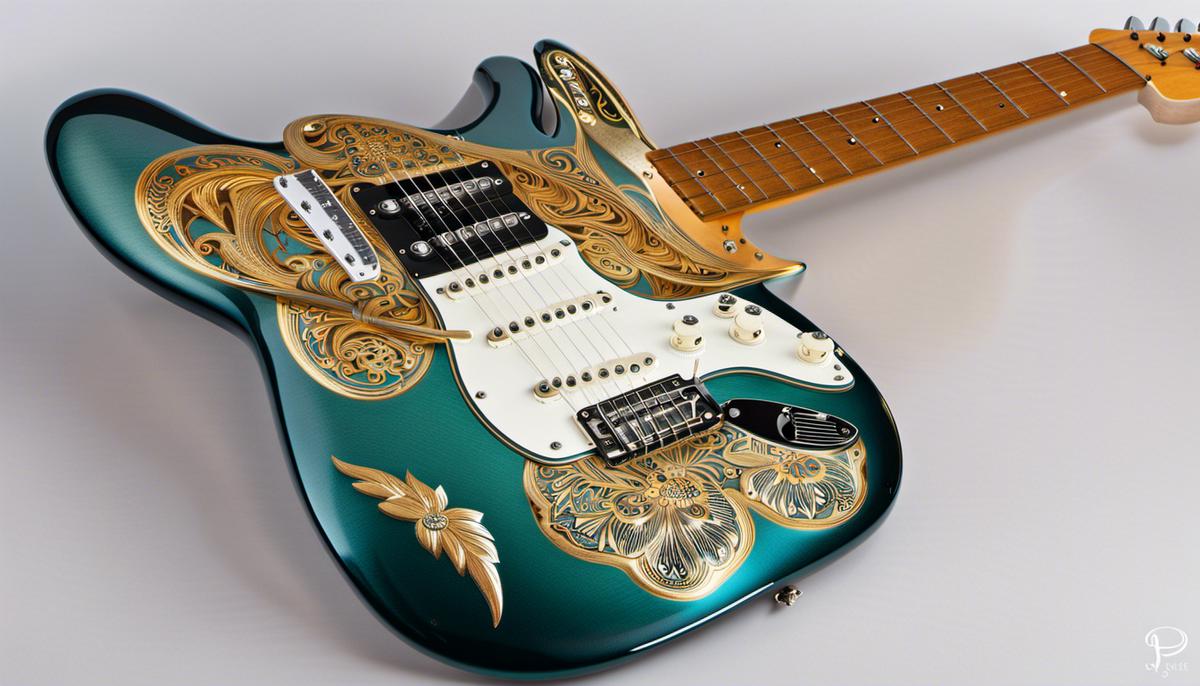
Key Features of a Fender Stratocaster
Main Characteristics of a Fender Stratocaster
The Fender Stratocaster is among the most iconic guitars to ever grace the music world, renowned for its unique and adaptable sound, a result of its distinct design elements and top-tier components.
Body and Neck Materials
The body of a Fender Stratocaster traditionally utilizes three types of wood: alder, ash, and poplar. Alder is the most common choice, offering a balanced and full-bodied sound with rich mids and lows. Ash, specifically swamp ash, provides a resonant, bright tone, whereas poplar, a cost-effective option, has a fairly balanced tone that leans slightly towards the bassy end.
The neck is typically constructed from either maple or rosewood. Maple necks deliver a bright, punchy, and clear tone that is ideal for country, rock, or blues music. Rosewood necks, on the other hand, generate a warmer, mellower sound that can complement jazz, blues, and rock music.
Pickups and Electronics
Standard Fender Stratocasters feature three single-coil pickups, responsible for the classic Strat ‘bell-like’ tone. Numerous variations exist in pickup configuration, such as HSS (humbucker-single-single) or HH (double humbuckers), which offer thicker, fuller sounds that are ideal for harder rock and heavier genres.
Strats usually come with a five-way pickup selector switch, allowing you to blend the outputs from different pickups and create a wide array of tones. The standard three knobs control master volume, tone for the neck pickup, and tone for the middle pickup.
Hardware
The hardware on a Fender Stratocaster includes chrome or nickel tuning machines, a synchronized tremolo bridge, and a bolt-on neck plate. The tuning machines ensure pitch stability while the tremolo bridge allows for expressive pitch manipulation. The bolt-on neck plate, a characteristic feature of Fender guitars, contributes to the guitar’s overall resonance and sustain.
Exploring the Aesthetics and Playability of Fender Stratocasters
Known for their outstanding performance, Fender Stratocasters feature a comfortable ‘C’ shaped neck designed to fit perfectly in the hand. The double-cutaway form allows for effortless access to higher frets. They present a broad spectrum of aesthetic choices, with diverse ranges of colors and finishes, complemented by varying pickguard colors and materials.
The Stratocaster is highly esteemed for its exceptional comfort, flexibility, and distinct tonal potential. Consequently, it’s among the go-to guitars for a wide range of abilities and musical tastes. When considering purchasing a Strat, factors like your chosen genre of music, your aesthetic preferences, and obviously, your budget should weigh in your choice to ensure you opt for the ideal guitar to suit your requirements.
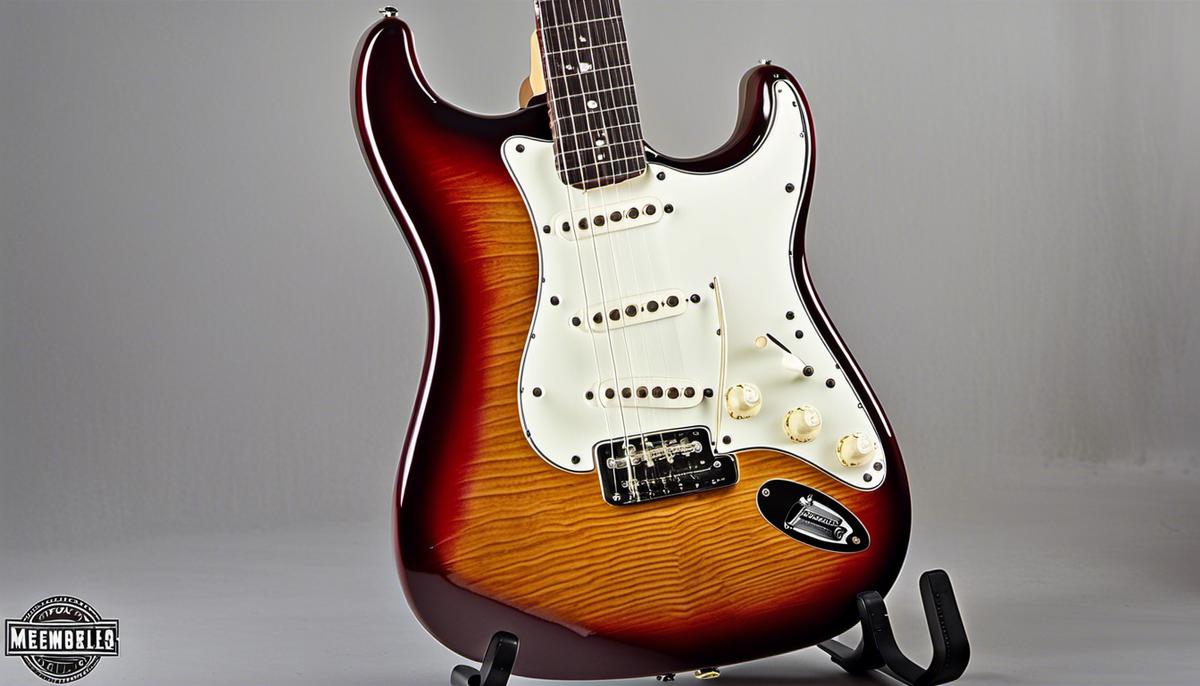
Wise Budgeting and Value Assessment
Navigating the Price Range of Fender Stratocasters
In preparing to purchase a Fender Stratocaster, it’s crucial to grasp an understanding of the potential price ranges. Prices can fluctuate broadly depending on the specific model, the guitar’s current state, and if it’s newly produced or pre-owned. A Fender Stratocaster may set you back from a couple hundred to several thousands of dollars. Variations in pricing among Stratocasters occur due to differences in series and individual models, each reflecting its unique attributes and corresponding cost.
Cost of New vs Used Models
When budgeting for a Fender Stratocaster, a key decision will be to choose between a new and a used guitar. New guitars come with a factory warranty and are in ideal condition, but they tend to cost more.
Used Fender Stratocasters provide a cost-effective alternative to new models. These guitars can range widely in price, from less than $500 for an older model in fair condition to more than $1000 for a well-kept instrument from a desirable series. Notably, certain vintage or rare used models may command prices well above new models.
However, buying used comes with its own risks such as potential hidden damage, the lack of warranty, and the possible need for future repairs or part replacements.
Understanding the Value of a Fender Stratocaster
Being knowledgeable about what affects the price of a Fender Stratocaster is crucial before making a purchase. Details like the guitar’s condition, age, rarity, and its origin can all influence its overall value.
The condition of your Strat is undoubtedly the most decisive factor when estimating its value. Obvious signs of damage like scratches, rust, or dents can significantly reduce the guitar’s worth. But, ‘relic’ features, which are visible signs of age on vintage models, can sometimes enhance their allure for collectors.
The age of the Stratocaster also weighs heavily on its value. Stratocasters from yesteryears, especially those from the 1950s and 1960s, can fetch a pretty penny owing to their vintage appeal.
The uniqueness or scarcity of a model can greatly increase its value. Limited editions, Strats with rare finishes, or those made from unconventional woods can all command hefty price tags.
The Stratocaster’s origin can also highly influence its price. American-made Strats are generally perceived as superior, hence they are priced higher, while those made in Mexico tend to be more affordable.
However, when evaluating the worth of a Fender Stratocaster, don’t forget to account for your personal preferences and needs as a musician. Some may find a modern guitar loaded with the latest features as offering the best value, while others may be captivated by the charm of a vintage guitar with historical significance or unique aesthetics.
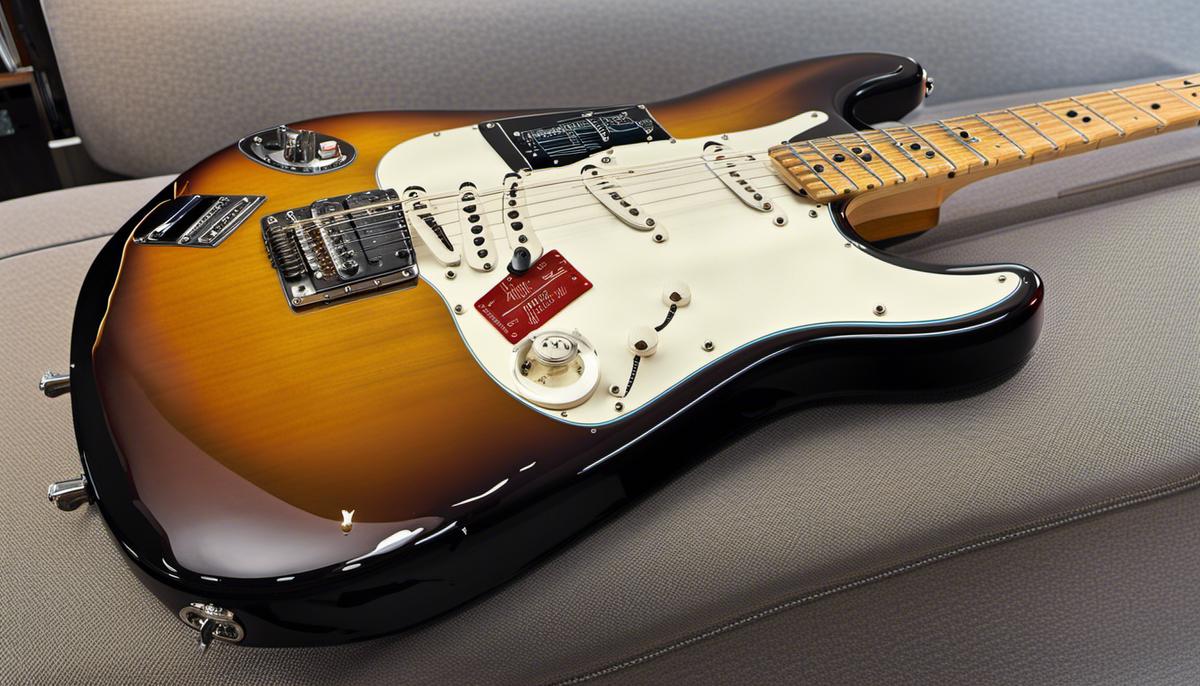
Where to Buy a Fender Stratocaster
Shopping for a Fender Stratocaster
You can buy a Fender Stratocaster from several reliable sources. The most trusted place, typically, is Fender’s official website, which offers a wide array of both new and classic models. The platform provides comprehensive descriptions and specifications for all their guitars, allowing customers to compare options easily before making a decision. Moreover, other reputable online music equipment retailers, such as Sweetwater, Guitar Center, and Musician’s Friend, also carry a wide selection of brand new Fender Stratocasters.
Physical Store Options
Brick-and-mortar stores offer an added advantage, permitting buyers to actually see, touch, and play the guitar before making a purchase. Shops like Guitar Center and Sam Ash Music Stores are widely spread across the United States and stock Fender Stratocasters. Independent music shops may also carry Fender models and may even offer a more extensive selection of used or vintage Stratocasters.
Buying Second-Hand
Looking to second-hand online platforms like eBay and Reverb can also prove successful in finding a Stratocaster. These sites often offer used Fender guitars, which can cost significantly less than a brand new one even if the quality is close to that of a new instrument.
Verifying Seller Authenticity
Before making a purchase online, especially a second-hand one, it’s crucial to verify the seller’s credibility. Check the seller’s rating, read previous customers’ reviews, and communicate directly with the seller whenever possible. Buyers should also request multiple images of the guitar and serial numbers to verify its authenticity with Fender’s online resources or customer support.
Checking Guitar’s Condition
Whether purchasing a Stratocaster online or in-store, buyers should scrutinize its condition. For pre-owned instruments, look out for obvious signs of damage like scratches, cracks, loose connections, or warped necks. If buying in a physical store, play the guitar to ensure there are no issues with the sound. When buying online, ask the seller for a video demonstration if possible.
Purchasing from Authorized Dealers
To ensure the authenticity and quality of the Stratocaster, buyers are encouraged to purchase from authorized Fender dealers, either online or in a physical store. Fender’s website includes a tool for locating authorized dealers. Stratocasters bought from authorized sellers often come with warranties and the guarantee of assistance from customer service if there are issues with the instrument.
Knowledge about these buying venues and tips on evaluating the credibility of vendors can give buyers the confidence they need in making a purchase, helping them secure a legitimate, high-quality Fender Stratocaster that best suits their musical needs and budget.
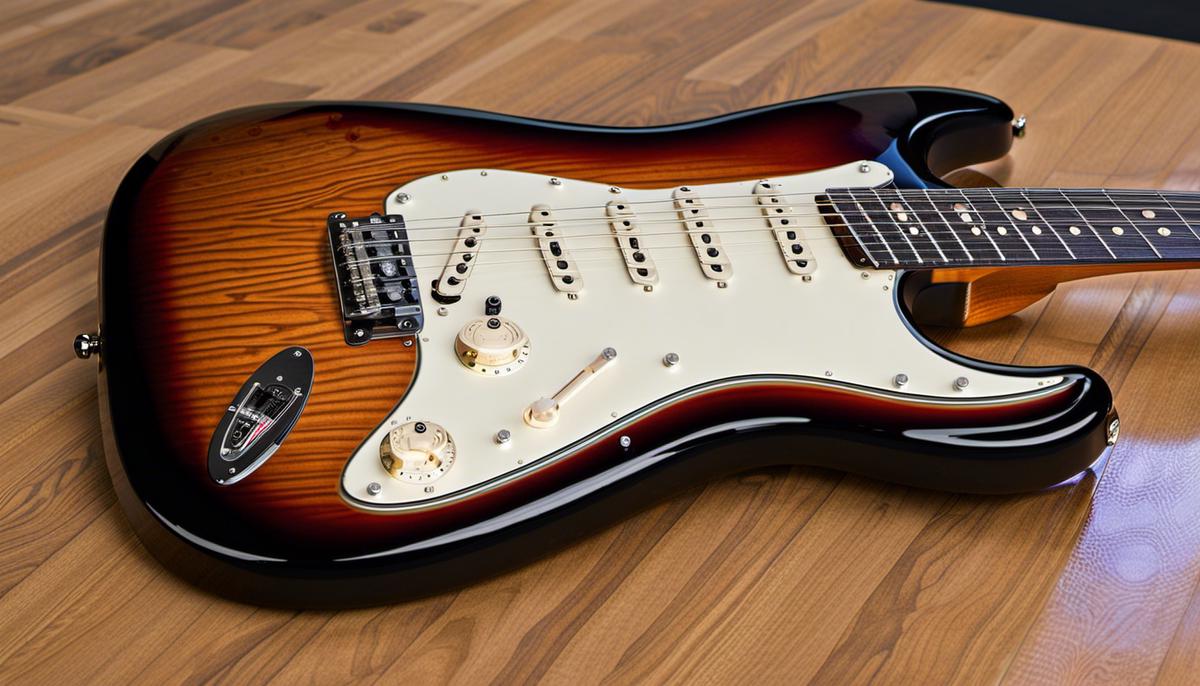
Delving into the world of the Fender Stratocaster, it is much more than just purchasing a guitar—it’s an investment in a legendary piece of music history. Navigating the various models and understanding the different features not only allow you to find a guitar that suits your playing style but also fuels your passion for music. Armed with the knowledge of the Stratocaster’s evolution, its unique characteristics, budgeting tips, and sources for a secure purchase, you’re now poised to acquire a guitar that has shaped the soundscape of countless albums and performances. More than just a musical instrument, the Fender Stratocaster could very well become a trusted companion in your creative journey, delivering tones as unique as the stories you’re yet to tell.
Comments are closed.